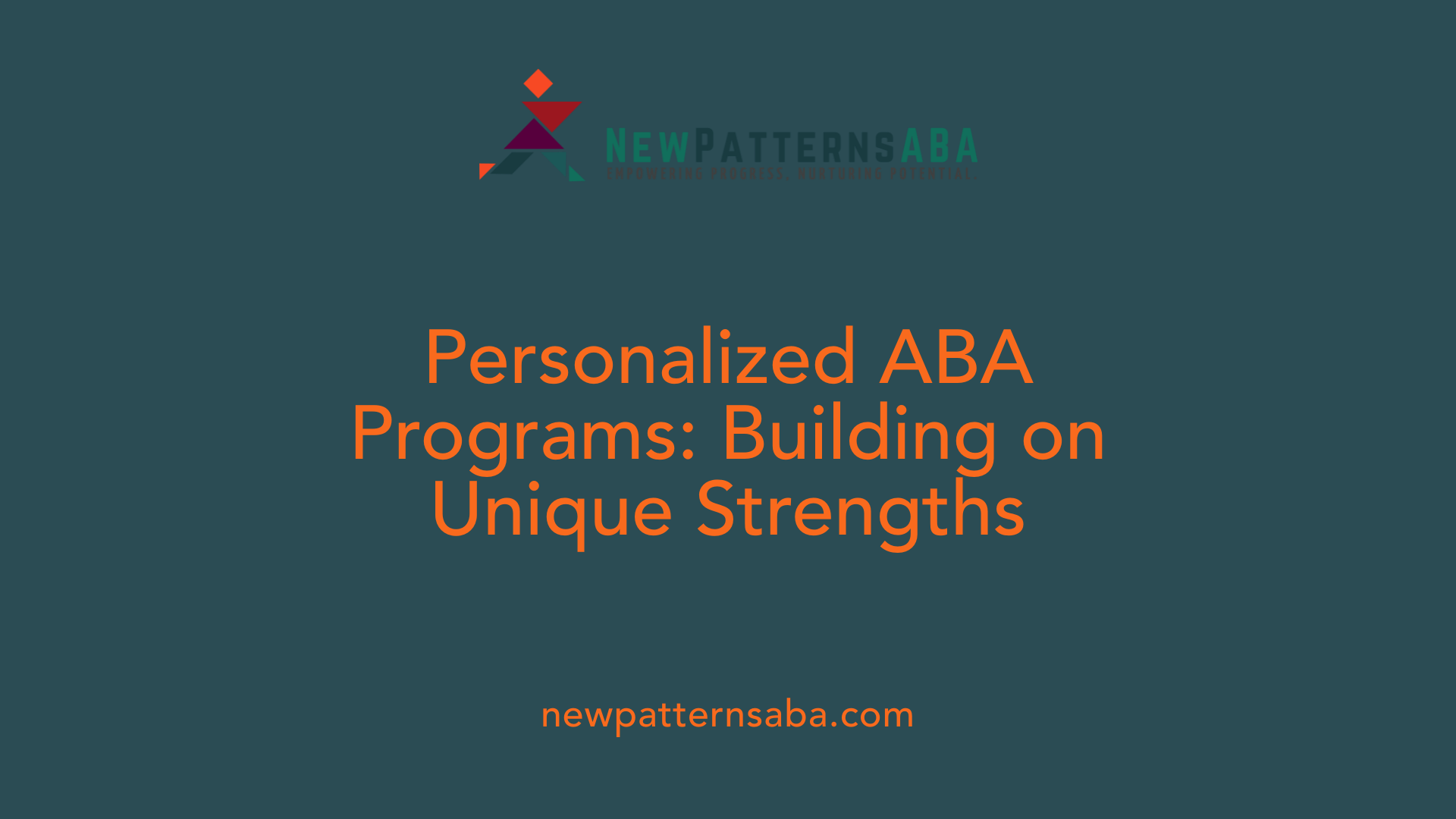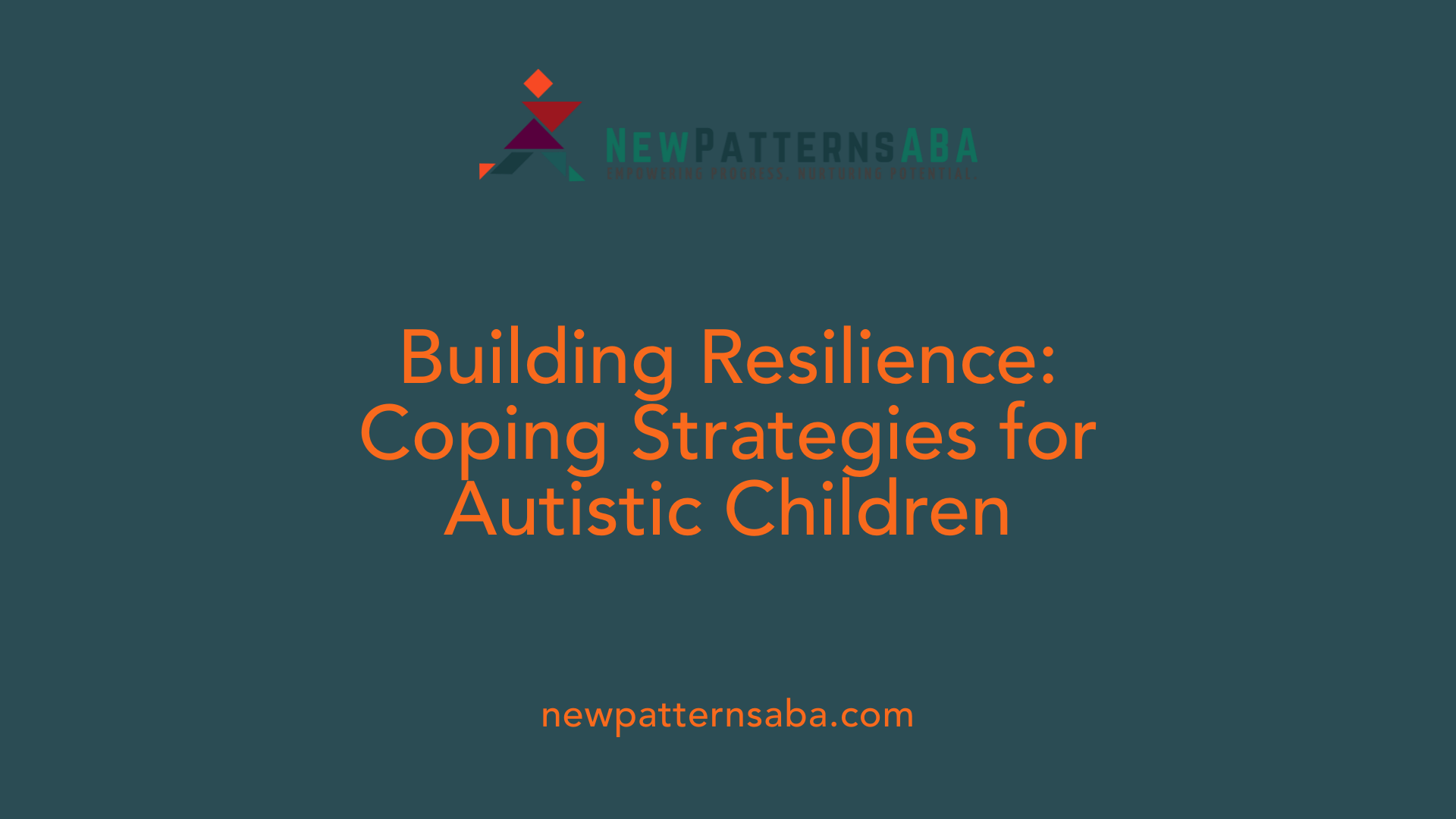Understanding the Importance of Resilience in Autism
Children with autism face unique neurological challenges that affect their communication, social interactions, sensory processing, and emotional regulation. Cultivating resilience through early intervention is crucial to helping these children navigate their worlds with greater confidence, adaptability, and emotional balance. This article explores the strategies and therapies, particularly Applied Behavior Analysis (ABA), that support autistic children in building coping skills and developing lifelong resilience.
The Neurological Landscape of Autism and Its Impact on Coping

Neurological Differences in Autism
Autism spectrum disorder involves unique neurological development that affects brain functions related to communication, social interaction, sensory input, and emotion management.
Challenges in Communication and Social Interaction
Children with autism often face difficulties expressing themselves and connecting socially due to these brain differences. This can lead to misunderstandings and social isolation without appropriate support.
Sensory Processing and Emotional Regulation Difficulties
Heightened or reduced sensitivity to sensory stimuli is common, making everyday experiences potentially overwhelming. Emotional regulation also tends to be more challenging, impacting coping with stress and change.
Understanding these neurological aspects is essential to develop effective coping strategies that cater to these distinctive challenges, helping autistic children navigate their environments more comfortably and confidently.
Applied Behavior Analysis (ABA) Therapy: Fundamentals and Role in Autism Support

What is Applied Behavior Analysis (ABA) therapy and how is it used to support individuals with autism?
Applied Behavior Analysis (ABA) therapy is a scientifically grounded approach that uses behavioral principles to improve specific skills and reduce behaviors that can be challenging for individuals with autism. The therapy focuses on increasing helpful abilities like communication, social interaction, and independence by tailoring individualized programs to each person's unique needs.
ABA employs the 'A-B-C' framework, which examines Antecedents (what happens before a behavior), Behaviors (the actions themselves), and Consequences (what follows the behavior). This understanding helps therapists design interventions that encourage positive behaviors.
How does ABA use behavioral principles to support autistic children?
ABA therapy systematically teaches coping skills through structured instruction and positive reinforcement. Positive reinforcement involves rewarding desirable behaviors to encourage their repetition. This approach helps children learn to manage stress, improve emotional regulation, and better navigate social situations.
What techniques are used in ABA therapy?
Several techniques commonly used in ABA to support autistic children include:
- Role-playing: Practicing social interactions in a controlled, safe environment to build social skills.
- Social stories: Using simple narratives to explain social situations and expected responses.
- Positive reinforcement: Providing rewards or praise to reinforce adaptive behaviors and coping strategies.
These methods can be combined with activities such as music therapy, exercise, and mindfulness to further enhance coping skills. ABA therapy's effectiveness is well-supported, especially when started early and tailored to each child's strengths and challenges.
| Aspect | Description | Benefit for Autism Support |
|---|---|---|
| Behavioral Principles | Understanding behaviors through antecedents, behaviors, and consequences | Allows targeted interventions to promote positive behaviors |
| Positive Reinforcement | Rewarding desirable behaviors to encourage them | Increases adaptive coping skills and reduces challenging behaviors |
| Role-playing and Social Stories | Simulated social scenarios to practice interactions | Improves social understanding and emotional regulation |
| Individualized Programs | Tailoring approaches based on each child's needs and abilities | Maximizes effectiveness and supports unique challenges |
Customizing ABA Therapy: Tailoring Programs to Individual Strengths and Needs

How is an ABA therapy program typically structured and customized for individuals with autism?
ABA therapy begins with detailed assessments to understand each child's unique strengths, challenges, and developmental goals. This assessment process often involves collaboration with parents, caregivers, and other professionals to gain a holistic view of the child’s abilities and needs. Based on this, therapists set clear, achievable objectives tailored to improve areas like communication, social skills, and coping strategies.
Individualized techniques like Discrete Trial Training and Natural Environment Teaching
ABA programs utilize various evidence-backed methods, including:
- Discrete Trial Training (DTT): Breaking down skills into small, manageable tasks taught in structured settings with clear prompts and positive reinforcement.
- Natural Environment Teaching (NET): Encouraging learning during everyday activities in natural settings to promote generalization of skills.
- Verbal Behavior (VB): Focusing on language development through teaching functional communication tailored to the child’s interests.
These techniques are selected and adapted to fit the child’s learning style and preferences, fostering engagement and better outcomes.
Progress monitoring and family collaboration
Ongoing data collection is a cornerstone of ABA therapy, enabling therapists to track progress closely and adjust the program as needed. Regular communication with families ensures that goals remain relevant and strategies align with the child's evolving needs. Families play an essential role in reinforcing new skills and providing consistent support across environments.
Table: Components of a Customized ABA Therapy Program
| Component | Description | Benefit to Child |
|---|---|---|
| Assessment | Comprehensive evaluation of skills and needs | Personalized goal-setting |
| Discrete Trial Training | Structured teaching of specific tasks | Builds foundational skills |
| Natural Environment Teaching | Learning in real-life contexts | Enhances generalization of skills |
| Progress Monitoring | Data-driven tracking and adjustments | Ensures effective and adaptive therapy |
| Family Collaboration | Parental input and involvement in therapy | Strengthens support system |
This flexible and individualized approach helps maximize the potential of ABA therapy to promote meaningful development and adaptive coping in children with autism.
The Professionals Behind ABA Therapy: Qualifications and Roles

Who provides ABA therapy and what qualifications do these professionals typically have?
ABA therapy is delivered by a team of trained professionals, primarily led by Board Certified Behavior Analysts (BCBAs). These specialists have advanced education, usually holding a master's degree in psychology, education, or related fields. They must also complete rigorous supervised practical experience and pass certification exams through the Behavior Analyst Certification Board (BACB).
Beneath BCBAs are behavior technicians and therapists. These individuals often have specialized training specifically in ABA techniques and work directly with children under the guidance of a BCBA. Their roles encompass implementing individualized treatment plans through consistent, structured instruction and positive reinforcement strategies.
What roles do behavior technicians and therapists play?
Behavior technicians and therapists are on the front lines of therapy. They conduct sessions, employ techniques such as role-playing and social stories, and monitor the child's progress. Their work ensures that each coping skill is taught effectively and reinforced consistently, supporting the child’s growth in communication, emotional regulation, and social functioning.
How does a family-centered approach and supervision contribute to effective ABA therapy?
Supervision by BCBAs is critical to maintain treatment quality and tailor interventions to the child's evolving needs. Moreover, a family-centered approach involves parents and caregivers in the therapy process, creating a supportive, collaborative environment. This partnership enhances treatment outcomes and helps generalize adaptive coping skills beyond therapy sessions.
| Professional Role | Qualifications | Primary Responsibilities |
|---|---|---|
| Board Certified Behavior Analyst (BCBA) | Master's degree + BACB certification | Designs, supervises, and adjusts individualized treatment plans |
| Behavior Technician/Therapist | Specialized ABA training | Delivers therapy sessions, applies interventions, tracks progress |
Families seeking ABA therapy should inquire about the qualifications of providers and their supervision methods to ensure the highest standard of care tailored to their child’s unique needs.
Teaching Coping Strategies to Build Emotional Regulation and Resilience

What Specific Coping Strategies Can Benefit Autistic Children?
Children with autism can gain from various targeted coping strategies designed to enhance emotional regulation and overall well-being. These strategies include music therapy, which can soothe sensory sensitivities; exercise and deep breathing exercises to manage stress; engaging in pleasant activities that promote positive emotions; and thinking of compromises to handle social challenges more effectively. Other approaches such as art journaling, sensory play, mindfulness, and relaxation techniques also help children process emotions and sensory input positively.
How Do Coping Skills Help Manage Stress, Anxiety, and Social Situations?
Teaching adaptive coping skills helps children manage the everyday challenges they face related to stress and anxiety. Techniques like walking away from stressful situations and allowing children to let go of what is beyond their control empower them to regulate their emotional responses. These skills contribute to better handling of social interactions, reducing feelings of overwhelm, and improving emotional control, which can make social settings more accessible and less intimidating.
What Are the Benefits of Building Emotional Intelligence and Adaptability?
By fostering coping strategies early, children with autism develop stronger emotional intelligence, which improves their ability to understand and respond to their feelings and those of others. This development enhances social functioning and builds resilience, enabling children to adapt to changes and challenges in routines or environments. Early intervention in emotional regulation through these strategies can lead to long-lasting improvements in mental health and quality of life.
ABA therapy often serves as a structured framework to teach these skills using positive reinforcement and role-playing, supporting children to internalize and apply their coping techniques successfully. Overall, building these skills promotes greater independence and emotional well-being for children on the autism spectrum.
Integrating Trauma-Informed Care within ABA Therapy for Holistic Support
What is the impact of trauma on children with autism?
Children with autism may face deep challenges when trauma affects their lives. Trauma can produce long-lasting effects on mental, physical, and emotional well-being. This often leads to heightened anxiety, difficulty regulating emotions, and struggles with trusting others. Such challenges can intensify autistic symptoms and create barriers to learning and social engagement.
What are the principles and components of trauma-informed ABA?
Trauma-informed ABA therapy tailors intervention by focusing on a child's unique history, strengths, and challenges. It blends traditional ABA techniques with a deeper understanding of trauma's impact. Core components include:
- Sensory supports to accommodate sensitivities
- Building strong, trusting rapport with the child
- Teaching emotional regulation skills
- Offering choices and promoting a sense of control
- Using trauma-sensitive language
- Consistent positive reinforcement to encourage adaptive behaviors
This approach fosters resilience and self-esteem while supporting behavioral progress.
How is assessment and individualized treatment planning conducted?
Assessment in trauma-informed ABA involves a comprehensive evaluation of:
- The child’s trauma history
- Functional behaviors linked to trauma
- Sensory and emotional sensitivities This process typically requires collaboration between therapists, parents, and other specialists. Based on assessment findings, treatment plans are customized to safely address trauma-related responses alongside developing coping skills.
How do empathy, sensory support, and emotional regulation techniques aid therapy?
Empathy and a holistic perspective are essential in trauma-informed care. Recognizing the child's experiences and responding with sensitivity helps build trust. Sensory supports minimize overwhelm and create a calming environment. Emotional regulation techniques empower children to manage stress and anxiety effectively, enhancing their ability to participate in therapy and everyday life.
Through trauma-informed strategies integrated within ABA, children with autism receive personalized support that respects their history and promotes holistic well-being.
Outcomes and Long-Term Benefits of ABA Therapy in Building Resilience
What types of behavioral improvements or outcomes can be expected from ABA therapy?
ABA therapy produces a broad range of behavioral improvements for children with autism. It systematically enhances communication skills, making it easier for children to express needs and engage with others. Social interaction skills improve through structured social stories and role-playing activities, fostering better peer relationships and reducing isolation.
Daily living skills such as self-care and routine management are also strengthened. These improvements contribute to greater independence and self-confidence, enabling children to participate more fully in their communities. ABA reduces challenging behaviors by teaching alternative, adaptive coping strategies reinforced through positive feedback.
How does ABA therapy enhance social, communication, and daily living skills?
Through consistent, individualized instruction, ABA therapy targets specific areas like language development and social reciprocity. Techniques like positive reinforcement motivate children to apply new skills in real-life situations. This tailored approach helps children manage stress and navigate social challenges more effectively.
Daily living skills training focuses on tasks such as dressing, eating, and following schedules, which are crucial for autonomy. These skills support smoother transitions and reduce anxiety around changes, contributing to emotional regulation and overall well-being.
In what ways does ABA therapy foster independence and lifelong resilience?
ABA builds resilience by equipping children with adaptive coping mechanisms to handle stress, sensory challenges, and emotional fluctuations. Early mastery of these skills creates a foundation for lifelong self-management.
The therapy's emphasis on positive behavior reinforcement encourages persistence and adaptability. Children learn to respond constructively to setbacks and changes, which enhances their problem-solving abilities and emotional intelligence over time.
What evidence supports ABA’s effectiveness?
Evidence shows that ABA is an evidence-based approach with proven benefits in improving outcomes for children with autism. Research highlights its effectiveness in reducing undesired behaviors and enhancing functional skills vital for everyday life.
Clinical studies and practice guidelines consistently recommend ABA for early intervention, noting its role in improving communication, socialization, and adaptive behaviors. When integrated with trauma-informed strategies, ABA can be tailored to address emotional and behavioral needs arising from trauma, further solidifying its efficacy.
| Outcome Area | Impact of ABA Therapy | Explanation |
|---|---|---|
| Behavioral Improvements | Reduces challenging behaviors and promotes positive actions | Teaches alternative coping skills using reinforcement and structured instruction |
| Social and Communication | Enhances peer interaction and expressive language skills | Uses role-playing and social stories to simulate and practice real-life scenarios |
| Daily Living Skills | Builds independence in routine tasks | Focuses on self-care skills that support autonomy and reduce anxiety |
| Resilience and Emotional Control | Develops adaptive responses to stress and change | Encourages coping strategies and emotional regulation for long-term well-being |
| Evidence-Based Validity | Strong research support and clinical recommendations | Multiple studies confirm ABA’s effectiveness in diverse autism-related outcomes |
Cultivating Resilience: A Foundation for Lifelong Growth
Helping autistic children build resilience through early, personalized interventions is essential for improving their quality of life and emotional well-being. Applied Behavior Analysis (ABA) therapy, backed by skilled professionals and enriched with trauma-informed practices, equips children with coping skills to manage stress, regulate emotions, and navigate social environments. By fostering adaptive behaviors and emotional intelligence from a young age, we lay the groundwork for lifelong resilience and independence, empowering these children to thrive in a complex world.
References
- Coping Skills Development in Early Intervention for Autism
- Trauma Informed Care in ABA
- Who Qualifies for ABA Therapy: Eligibility Guide
- Applied Behavior Analysis (ABA)
- What to Consider When Looking for a Qualified ABA Provider
- Applied Behavior Analysis (ABA)
- Applied Behavior Analysis in Children and Youth with Autism ...
- Applied Behavior Analysis (ABA)





